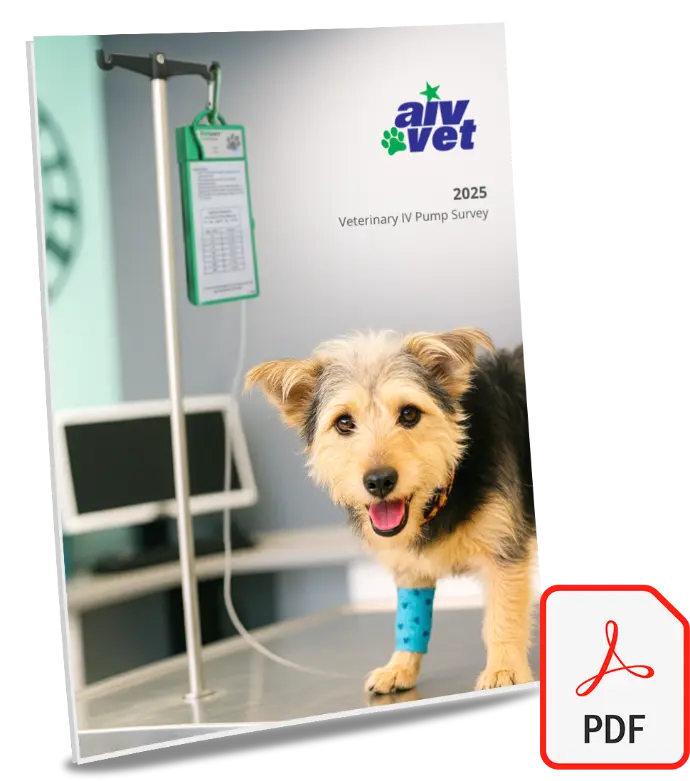Here's a stat that might not surprise you - according to our 2025 vet industry survey, 97% of veterinarians say they experience recurring issues with their current infusion pumps. Sensor alarms that won't quit, interfaces that freeze mid-procedure, battery errors during critical cases.
If you're shopping for a reliable veterinary syringe pump that won't cripple your budget, you've probably narrowed it down to two well regarded workhorses - the Baxter AS50 and the Smiths Medical Medfusion 3500.
Both accept standard 1-60 mL syringes, both have tens of thousands of units still running across the country, and both are still in high demand on the refurbished equipment market.
But which one actually makes sense for your practice? Let's dig into what each pump does best.

Where the AS50 really shines
It's the budget champion
The AS50 can cost 14-30% less upfront than a comparable Medfusion 3500. But the real savings show up over time - simpler electronics mean cheaper replacement parts when things eventually wear out.
Your techs already know how to use it
Just a few parameters to input. Numeric entry. That's it. No deep menu trees to navigate, no drug library maintenance to forget about. Most vet techs learned on pumps exactly like this, which means less training time and fewer "how do I..." questions during busy shifts.
No hidden software chores
What you see is what you get. Plug it in, load your syringe, set your rate. No software updates, no drug library maintenance, no IT headaches.

Where the Medfusion 3500 leads
Built-in safety features you can document
The 3500 comes with a real drug error reduction system - hard and soft dosing limits, drug names on the display, and FlowSentry rapid occlusion detection. If you ever need to document safety protocols for insurance or referral partners, this puts you in smart-pump territory.
Better accuracy when it matters
±2% versus ±3% might sound trivial, but on micro-doses like fentanyl at 0.5 mL/hour, that better accuracy can matter clinically. Plus, if you ever need high-volume feeds, the 3500 can push 1,130 mL/hour versus the AS50's 438 mL/hour ceiling.
Data connectivity that actually works
USB downloads of alarm histories, optional wireless export to your practice management system, infrared cloning between pumps. If you want to track pump performance or integrate with your EMR, the 3500 can do it.
Future-proof service life
When you buy a 3500, you know your practice can expand with the somewhat richer features built in.
When to choose which pump
Go with the AS50 if you're running:
A budget-conscious GP practice doing basic CRIs and routine surgery.
Mobile vet services where you need a reliable pump in a bag.
A clinic where IT support is minimal and staff prefer simple equipment.
Any practice where the pump will mainly do straightforward fluid delivery.
Pick the Medfusion 3500 if you're:
A specialty or ER- ready clinic running high-risk medications like chemo or vasopressors.
Planning to integrate pump data with your practice management system.
Treating cases where ±2% accuracy matters.
Required to document drug safety protocols for accreditation or insurance.
The real cost question
Our 2025 survey found that 94% of veterinarians say cost plays a critical role in pump purchasing decisions. No surprise there. But the real question isn't just upfront cost - it's whether you'll actually use the features you're paying for.
The Medfusion 3500 may cost $90 more per year over a five-year ownership period (many factors play into this, so it’s an incredibly rough estimate you shouldn't take to heart). That's not nothing, but it's also not crushing. The question is whether those safety features, connectivity options, and tighter accuracy specs will actually improve your workflow or just sit unused.
If you won't maintain a drug library or need data connectivity, the AS50's simplicity and lower cost make perfect sense. If you're pushing accuracy limits or need to document controlled drug infusions, the 3500 pays for itself quickly.
Making the choice that fits
The honest answer? Both pumps are reliable and low risk investments for your vet practice. The AS50 has been keeping animals safe for decades with its simple, reliable design. The 3500 adds more robust safety features that some practices genuinely need.
Your choice comes down to matching the pump to how you actually practice.
Ask yourself - will we use a drug library? Do we need data logging? Are we treating cases where that extra 1% accuracy matters? Do we have the IT bandwidth to maintain smart-pump features?
Answer those questions honestly, and the right pump becomes obvious.

Want more data on how other veterinary practices are handling equipment decisions?
Get your hands on our full 2025 Veterinary IV Pump Survey to see what's driving purchasing decisions across the country and learn from the experiences of over 100 clinics already using fluid delivery equipment.